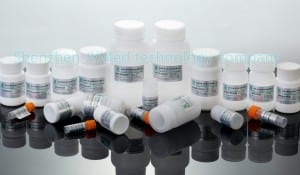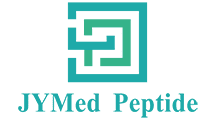For another example of how a little stress (in the form of infection) could be good for you (with excellent clinical evidence) — see https://luysii.wordpress.com/2018/12/05/is-a-little-infection-good-for-you-if-so-what-about-radiation/
Pursuant to the terms of the UCSD Agreement, we shall provide our proprietary drug product candidate Aramchol, without cost, to conduct the study as required pursuant to the Protocol and shall provide funds to conduct the ARTISAN Study over the duration of the study.
Also striking was the isoform specific effect on hysteretic behaviour in HCN channels. By including a short −70 mV pre-pulse prior to activation, the voltage-dependence of HCN1 channel activation is more depolarized by +14 mV. Cholesterol depletion or enrichment had no effect on HCN1 hysteresis (Fig. 5), which was corroborated by ramp protocols (Fig. 6). On the other hand, HCN2 channels showed no hysteresis in untreated cells, however, cholesterol depletion shifted the voltage-dependence of activation following the pre-pulse by +10–17 mV. Cholesterol enrichment also affected hysteresis in HCN2 channels with a small depolarizing shift observed (Fig. 6). Again these results were corroborated by examining hysteresis using ramp protocols in which we observed increased sensitivity to hysteresis upon cholesterol depeletion (Fig. 6). In HCN4 channels, a pre-pulse induced at +10 mV depolarizing shift in the voltage-dependence of activation, which was furthered an additional +5 mV with cholesterol enrichment (Table 1). Cholesterol regulation appears to differentially regulate the sensitivity or propensity for hysteresis or mode-shifting to occur in each isoform. In HCN1 channels, which readily undergo mode-shifting, the manipulation of cholesterol levels does not affect hysteresis. Cholesterol appears to make it easier for HCN4 channels to undergo mode-shifting, while mode-shifting appears more readily in HCN2 channels upon cholesterol depletion. Thus, it is evident that cholesterol regulates each isoform of human HCN channels uniquely.
On October 31, 2016, the Company completed an initial public offering ("IPO"), in which the Company issued and sold 7,049,230 shares of common stock at a public offering price of $13.00 per share, resulting in net proceeds of $82.8 million after deducting $6.4 million of underwriting discounts and commissions and offering costs of $2.4 million. On November 29, 2016, the Company completed the sale of an additional 1,057,385 shares of common stock to the underwriters under the underwriters’

选择性雌激素受体调节剂市场2004至2008年年降低2.5%。2008年规模为5.26亿美元,占激素治疗市场的5.8%。
Issued patents that we have or may obtain or license may not provide us with any meaningful protection, prevent competitors from competing with us or otherwise provide us with any competitive advantage. Our competitors may be able to circumvent our patents by developing similar or alternative technologies or products in a non-infringing manner. Our competitors may also seek approval to market their own products similar to or otherwise competitive with our products. Alternatively, our competitors may seek to market generic versions of any approved products by submitting ANDAs to the FDA in which they claim that patents owned or licensed by us are invalid, unenforceable or not infringed. In these circumstances, we may need to defend or assert our patents, or both, including by filing lawsuits alleging patent infringement. In any of these types of proceedings, a court or other agency with jurisdiction may find our patents invalid or unenforceable, or that our competitors are competing in a non-infringing manner. Thus, even if we have valid and enforceable patents, these patents still may not provide protection against competing products or processes sufficient to achieve our business objectives.
Moreover, our ability to protect and enforce our intellectual property rights may be adversely affected by unforeseen changes in foreign intellectual property laws. Additionally, laws of some countries outside of the U.S. and Europe do not afford intellectual property protection to the same extent as the laws of the U.S. and Europe. Many companies have encountered significant problems in protecting and defending intellectual property rights in certain foreign jurisdictions. The legal systems of some countries, including India, China and other developing countries, do not favor the enforcement of patents and other intellectual property rights. This could make it difficult for us to stop the infringement of our patents or the misappropriation of our other intellectual property rights. For
Hi Paul, Very interesting statement of how your brain works. This is not matter of intelligence as you are very intelligent person. A matter of how brain hard wired. My brain automatically rejects everything that not true by predominance of evidence. Even as a child although raised in traditional religious home, I dismissed idea of God and afterlife as nonsense and never revisited question. So just matter of how wired. I just never consider things that I consider not supported by facts.

For example, in vitro immortalized cells gradually gain methylation, but this primarily occurs on inactive gene sites. If the area of the genome is in use then it is maintained and far more resistant to methylation and deactivation. It takes many population doublings (>100) before active sites start to get methylated (in vitro). This can explain why exercise, calorie restriction and certain supplements work – by forcing an certain cellular response that is resistance to drift.
A significant portion of our total outstanding shares is restricted from immediate resale but may be sold into the market in the near future, which could cause the market price of our common stock to decline significantly, even if our business is doing well.
Once the submission is accepted for filing, the FDA begins an in-depth review. The FDA may refuse to approve an NDA if the applicable statutory and regulatory criteria are not satisfied or may require additional clinical or other data. Even if such data are submitted, the FDA may ultimately decide that the NDA does not satisfy the criteria for approval. The FDA reviews an NDA to determine, among other things, whether a product is safe and effective for its intended use and whether its manufacturing is cGMP-compliant. The FDA may refer the NDA to an advisory committee for review and recommendation as to whether the application should be approved and under what conditions. The FDA is not bound by the recommendation of an advisory committee, but it generally follows such recommendations. Before approving an NDA, the FDA will typically inspect the facility or facilities where the product is manufactured and tested. The FDA will also inspect selected clinical sites that participated in the clinical studies and may inspect the testing facilities that performed the GLP toxicology studies cited in the NDA.
Yes it is unclear whether this would be good or bad in vivo. Echoing what Alan said, obviously blocking protein synthesis includes sirtuins, but it’s only intermittent so would take this finding with a pinch of salt, and obviously whatever the downsides of rapamycin, it extends lifespan in everything it’s been tried in.
Patent Term Extension Considerations for BioPharma Patents | Pramlintide Acetate Gmp Exporter Related Video:
Our growth depends to the superior products ,great talents and repeatedly strengthened technology forces for Thymosin Α1 Acetate, Eptifibatide Acetate Provider, 17-Pentaoxo-1-Thia-4, We have a dedicated and aggressive sales team, and many branches, catering to our customers. We are looking for long-term business partnerships, and ensure our suppliers that they will definitely benefit in both short and long run.







